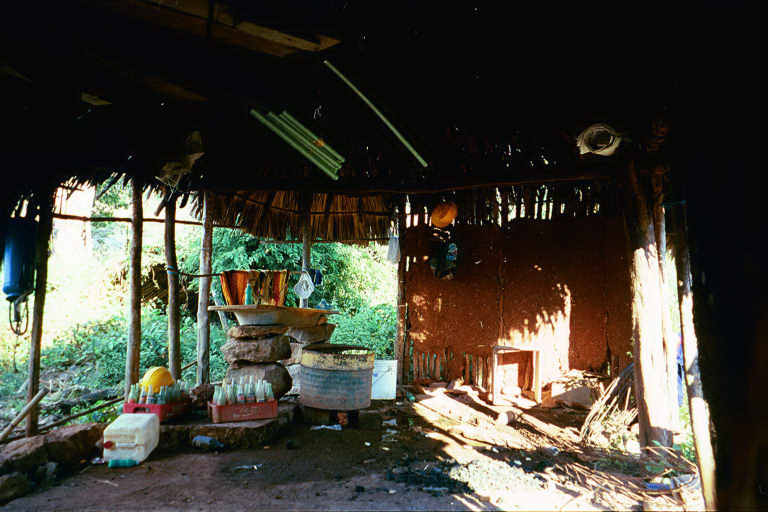Our tour guide knows some native Indians who make money by allowing tourists to visit their home. We thought this would be a good way to learn more about the area from the point of view of the people who actually live there instead of only what the tourists see, so we stop and explore.
The Yucatan Peninsula, and the state of Yucatan, have a history of fighting for independence, and the native people were considered fierce warriors by those who encountered them. In addition to the Mayan revolt against the Toltecs in the 13th century, the natives fought hard against the Spanish Conquistadores in the 16th century, wanting to hold onto their lands. Eventually, however, the Spanish prevailed. However, during the colonial period in the late 18th and early 19th centuries, the Mayans left in the area staged a number of rebellions against Spanish control.
Until Mexico won independence from Spain in 1821, the Yucatan was under Spanish control, and then became part of the Independent Mexican Empire, though it was located relatively far from the rest of Mexico. Three years after Mexico became independent, the government divided the Yucatan Peninsula into three states: Yucatan, where present-day Merida is located; Campeche; and Quintana Roo.
But the people of Yucatan hadn’t given up on their own independence. In the 1830s, additional rebellions occurred. In 1840, a congress accepted Yucatan’s declaration of independence, but the government of Mexico didn’t agree. Santa Anna, then president of Mexico, sent an army to invade the Yucatan as well as preventing any ships from entering or leaving the port. Although the natives defeated the Mexican army, the situation made things difficult for the natives. Over the next decade, conflict between the Mayans and Mexico about whether Yucatan was independent was nearly constant, until the Yucatan reunited with Mexico in 1848. But even that didn’t completely end the conflict; some Mayans continued fighting for independence into the early 20th century.
Only a little over a hundred years ago, the Yucatan’s only connection to the rest of the world was by sea. However, by the mid-1900s, the railroad and highway had extended into the area and Merida had its airport. Despite the improvement of transportation and modern technology, even today some of the indigenous residents still don’t have contact with the outside world and aren’t aware that a more comfortable way of life than theirs exists. This led to what we considered some odd priorities in the place we visited.
The house our guide brought us to is adobe with a straw roof, but it's wired for electricity. It's a strange combination of the ancient with just a few elements of technology. You would think that the first thing people would want, if they had only a little money, would be a leakproof roof and clean water. But many Indians, because of their upbringing in this environment, are used to the water and the housing. They may prefer having a radio.
Click prev or next for more trip stories from Johnny Monsarrat.






